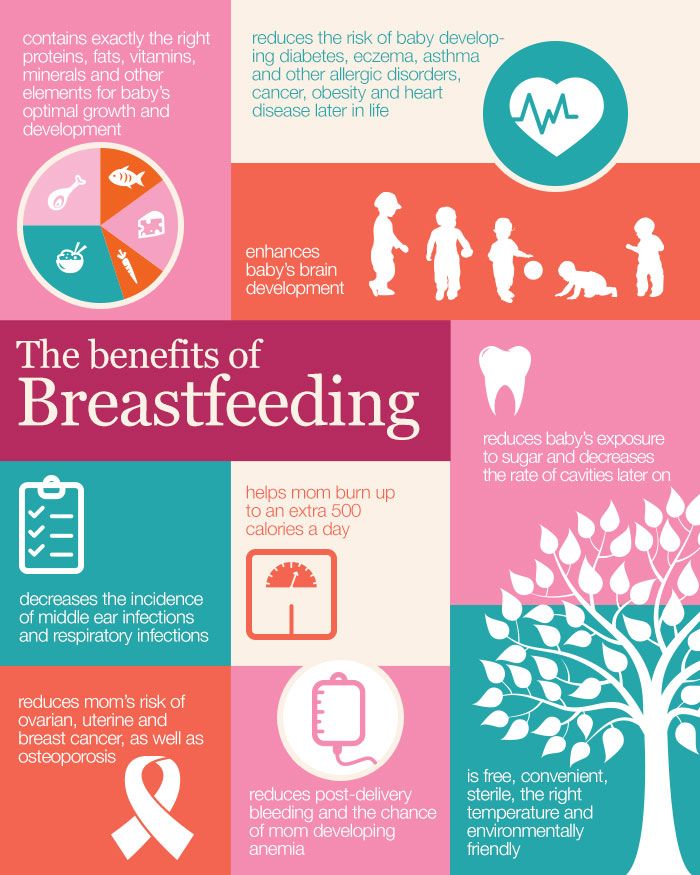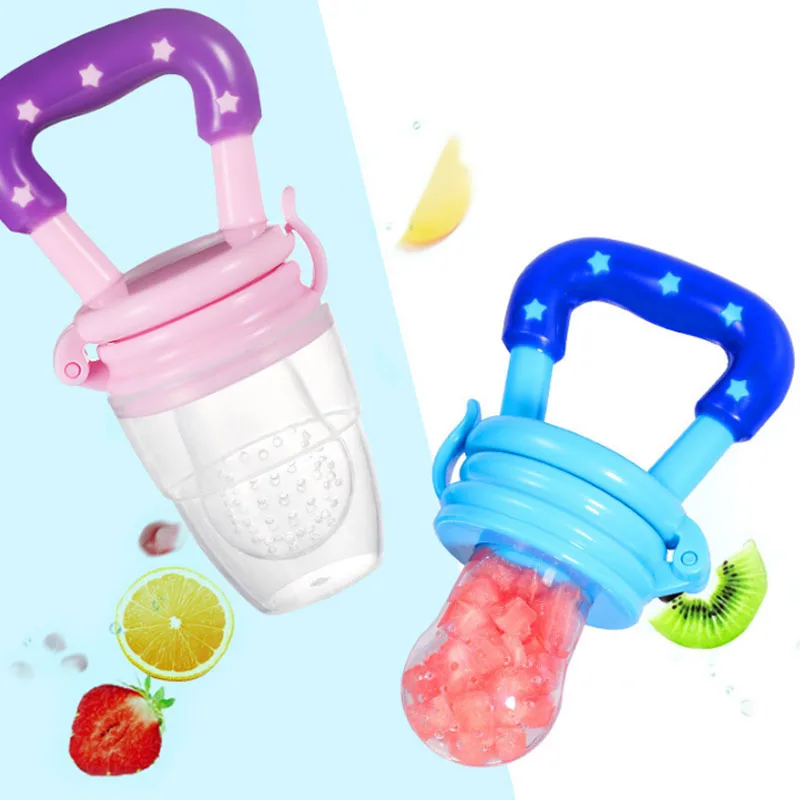Feeding baby calves
Caring for Newborn Beef Calves Separated from Their Dams
Calves that are orphaned or abandoned at a very young age present a unique set of challenges on a cow-calf operation. These situations arise not only from dams dying at or shortly after birth, but also from behavioral or health issues that keep a cow or first-calf heifer from properly mothering her calf. Calves out of cows producing insufficient milk or born as multiples may need to be raised with special attention. In the dairy industry, calves are routinely separated from their dams at very young ages. The resulting calves are sometimes referred to as “bucket” or “bottle” calves.
Initial Calf Care Priorities
Colostrum Intake
The first priority in caring for a bottle calf is to ensure adequate colostrum intake. Timing of colostrum intake is particularly important, because the calf’s ability to absorb colostral antibodies decreases rapidly throughout the first day of life. Plan for calves to receive 5 to 6 percent of their body weight in colostrum within the first 6 hours after birth. Feed colostrum again 12 hours later. To ensure proper timing of these feedings, calving herds must be watched closely for new births. Observe newborn calves within the first few hours of life to ensure that they nurse their dams. If dams refuse to allow their calves to nurse or are physically unable to allow nursing, take immediate action to provide colostrum to newborns.
Fresh colostrum from the dam is best and may require restraining and milking the dam or allowing the calf to nurse the restrained dam. This can be accomplished in a squeeze chute with removable sides that allow access to the udder. In the case of orphaned calves, providing colostrum from another source is critical. If fresh colostrum is not available, then the preferred source of colostrum is frozen colostrum previously harvested from within the same herd. The next-best option is frozen colostrum from another herd. When neither fresh nor frozen colostrum is available, then substitute commercially available powdered colostrum..jpg) Have colostrum and newborn feeding supplies on hand before the start of the calving season. Otherwise, it may be difficult to acquire and administer colostrum in a timely manner.
Have colostrum and newborn feeding supplies on hand before the start of the calving season. Otherwise, it may be difficult to acquire and administer colostrum in a timely manner.
Naval Care
Naval care is another calving management practice that should receive priority. Apply iodine or a similar topical disinfectant to the umbilical cord of the newborn calf. Continue to observe the naval closely to make sure that it dries and heals. Watch for signs of naval ill or infection, such as swelling of the naval. These infections are more likely in muddy or wet calving areas. Naval ill can develop even when the naval is disinfected shortly after birth and ground conditions are dry. An infected naval typically appears swollen and may be painful to the touch. Treat an infected naval immediately. Consult a veterinarian for treatment protocols.
Protection
Provide calves with clean, well-ventilated pens and shelter from the weather. Calf hutches can be purchased or barn pens used to house bottle calves. Individual penning can help prevent calves from sucking one another and reduce the spread of disease. It also facilitates individual monitoring of calf feed intake and feces consistency as signs of calf health. Allow 15 to 20 square feet of barn space for calves with access to an outdoor lot and 20 to 30 square feet of barn space for those without outdoor lots. Mississippi State University Extension Publication 2558 Beef Cattle Calving Management provides additional details about processing newborn beef calves.
Individual penning can help prevent calves from sucking one another and reduce the spread of disease. It also facilitates individual monitoring of calf feed intake and feces consistency as signs of calf health. Allow 15 to 20 square feet of barn space for calves with access to an outdoor lot and 20 to 30 square feet of barn space for those without outdoor lots. Mississippi State University Extension Publication 2558 Beef Cattle Calving Management provides additional details about processing newborn beef calves.
Very young calves raised on bottle or bucket feedings are generally more vulnerable to predators than heavier, older cattle. Without the close connection to a dam in the herd, bottle or bucket calves may separate themselves from the herd on a frequent basis. This leaves them vulnerable to predator attacks, and predators may be particularly attracted to the herd during calving season with the presence of afterbirth and new calves. Consider penning bottle calves in a more protected area such as a well-fenced pen with a mature cow until they grow to a size and thriftiness that allows them to better escape from or defend against predators. Extension Publication 2661 Predator Control on Beef Cattle Operations provides more information on this topic.
Extension Publication 2661 Predator Control on Beef Cattle Operations provides more information on this topic.
Feeding the Young Calf
For the first few months of life, bottle calves must be either artificially reared by humans on milk replacer diets or grafted onto nurse animals. These young calves are not yet mature ruminants, so they need a milk-based diet. A calf needs to consume approximately 8 percent of its birth weight in milk or milk replacer each day. Offer bottles twice daily in two equal feedings. Follow feeding directions on product labels. As the calf grows, keep the amount of milk replacer constant, but also offer calf starter feeds and good quality hay as its appetite increases. Make clean water available for the calf, as well.
Grafting to a Nurse Cow
Successful grafting of a calf onto the side of a lactating cow eliminates the labor and expense of bottle feeding. Besides providing a milk source for the calf, it also gives the calf protection from predators..jpg) Grafting a calf onto a beef cow that has lost her calf or another nurse cow (often a dairy breed) purchased specifically for such use requires management and patience. Grafting may also be needed in cases in which the dam initially refuses to allow her own calf to nurse. This may be more common in females that calved for the first time or dams that gave birth to multiples.
Grafting a calf onto a beef cow that has lost her calf or another nurse cow (often a dairy breed) purchased specifically for such use requires management and patience. Grafting may also be needed in cases in which the dam initially refuses to allow her own calf to nurse. This may be more common in females that calved for the first time or dams that gave birth to multiples.
Start by penning lactating cows and newborn calves separately from the rest of the herd in a space that allows the calf to interact closely with the cow to which grafting is being attempted. Provide adequate shade and water in the pen, along with forages or other feedstuffs for the cow. For best results when introducing the cow and calf, do not bottle feed the calf to satiation immediately before trying to get it to suckle the prospective nurse cow. A tight-bagged (full-uddered) cow and a hungry calf are more likely to result in successful grafting.
When applicable, rub or tie the skinned hide (skin over the back along with the tail) of the nurse cow’s dead calf onto the grafted calf to transfer scent and encourage the cow to accept the new calf. Afterbirth and commercial products consisting of synthetic pheromones also can help in grafting. Using these scents may be helpful during the first 2 to 3 days but not much after that period.
Afterbirth and commercial products consisting of synthetic pheromones also can help in grafting. Using these scents may be helpful during the first 2 to 3 days but not much after that period.
The cow and calf may be too distracted by human presence to nurse or bond when first introduced. Allow them time alone together without distraction, and then either observe them at a distance undetected or check them later for signs of nursing, including a full belly on the calf and slick teats or reduced udder filling on the cow.
Initially give the nurse female an opportunity to accept the calf without restraint, but do not wait too long for nursing to occur before relying on restraint. It is critical that newborn calves receive adequate colostrum and nutrients in early life. Also, dehydration is a risk that must be addressed through forced feeding situations if necessary. If the cow repeatedly kicks at or butts the calf and does not allow it to nurse when unrestrained, physically restrain the nurse cow in a squeeze chute with the bottom sides removed so the calf can nurse twice a day. Repeat until the cow claims the calf willingly.
Repeat until the cow claims the calf willingly.
If the nurse female has undergone a difficult birth or is stressed from losing her calf, use extra care in handling her, and observe her closely for signs of distress or health problems. It is possible that even when a nurse female accepts a grafted calf, she may not lactate well enough to support the calf. In some cases, the cow may dry off (discontinue lactation). Do not assume that a suckling calf is getting adequate nutrients through nursing. Closely monitor the calf’s weight and condition, and supplement additional nutrients as needed.
Milk Replacer Diet
In the absence of a nurse cow, use a milk replacer that contains at least 22 percent crude protein and 15 percent fat. Mix milk replacer with warm water to better dissolve the product and make it more attractive to the calf. If a hot water source is not available close to the feeding site, use a thermos or other insulated container to transport warm water to the feeding site. Then, mix the warm water and milk replacer powder together when ready to feed the bottle. Keep the temperature of the mix consistent between feedings and not more than 100°Fahrenheit. Also, use the same amount of milk replacer in the mix each feeding. Be sure to thoroughly mix the powder and water by stirring or shaking to dissolve all of the powder into the mixture.
Then, mix the warm water and milk replacer powder together when ready to feed the bottle. Keep the temperature of the mix consistent between feedings and not more than 100°Fahrenheit. Also, use the same amount of milk replacer in the mix each feeding. Be sure to thoroughly mix the powder and water by stirring or shaking to dissolve all of the powder into the mixture.
Use separate bottles for each bottle calf to limit risk of disease spread. Sanitize all feeding equipment after each meal. To protect human health, particularly that of susceptible young children, keep bottle feeding supplies out of human food preparation areas.
Although a calf may instinctively nurse its mother, it may need to be taught to drink from a bottle. Start by inserting one or two fingers into the calf’s mouth. As the calf begins to suck, insert the bottle nipple in its mouth. It may be necessary to straddle or stand beside the standing calf and support its head upward while the calf is backed against a solid fence, wall (corner is best), or vehicle. This head position will also help close the esophageal groove present in young calves and shunt milk past the rumen and directly to the abomasum (“true stomach”) instead.
This head position will also help close the esophageal groove present in young calves and shunt milk past the rumen and directly to the abomasum (“true stomach”) instead.
It may take a while to get lethargic or ill calves to actively suck a bottle. When possible, spend the additional time to get a calf started on a bottle before resorting to a forced infusion of feeding liquid. But, if a calf still refuses to take a bottle, a stomach tube (Figure 1), also known as an esophageal feeder, can be used to infuse milk replacer directly to the calf’s stomach. Take extreme care to ensure that the tube is in the esophagus and not the windpipe. Listen to make sure that breathing sounds are not coming from the tube. Sometimes, infusion of milk replacer into the stomach will stimulate a calf’s appetite. Weak calves may require smaller and more frequent feedings. Continue to monitor calves for signs of unthriftiness such as poor growth, scours, and a “pot-bellied” appearance. Have a scours prevention and treatment plan in place based on the advice of a veterinarian familiar with the operation. Extension Publication 2551 Identifying Sick or Injured Cattle provides additional insight about monitoring calves for illness.
Have a scours prevention and treatment plan in place based on the advice of a veterinarian familiar with the operation. Extension Publication 2551 Identifying Sick or Injured Cattle provides additional insight about monitoring calves for illness.
As calves become used to drinking from a bottle twice a day, they may anticipate feedings and aggressively pursue the bottle. These calves become accustomed to humans feeding them. Although bottle calves are often considered tame or docile, the bottle handler needs to be careful of being head butted by the calf. This becomes more of a safety concern as the calf gains stature and weight over time. A wire bottle holder can be used to attach a filled bottle to a fence to keep the handler from having to hold the bottle during feeding. Be sure to remove the bottle from the calf when emptied to prevent the calf from sucking excess air into its gut.
Bucket feeding of milk replacer is also possible, but take precautions to keep calves from stepping in and knocking over buckets. Make sure that buckets are not too tall for calves and are secured. To teach bucket feeding, place fingers moistened with milk into the calf’s mouth as described earlier. As the calf begins to suck, gently lower its mouth into the bucket of warm milk. Keep its nostrils clear of the liquid. Repeat as needed until the calf drinks on its own.
Make sure that buckets are not too tall for calves and are secured. To teach bucket feeding, place fingers moistened with milk into the calf’s mouth as described earlier. As the calf begins to suck, gently lower its mouth into the bucket of warm milk. Keep its nostrils clear of the liquid. Repeat as needed until the calf drinks on its own.
Transition to Solid Feeds
By 3 weeks of age, calves should be able to digest small amounts of solid feeds. Make sure feeders are not so high or deep as to be difficult for calves to reach the feed. Calf starter feeds should be dust-free, highly palatable feeds containing 75 to 80 percent total digestible nutrients (TDN), 15 to 20 percent crude protein, and adequate minerals and vitamins. They should be coarsely ground, rolled, or pelleted to facilitate feed intake and rumen development. Calves can be adapted from starter to grower rations at around 4 months of age.
After the calf finishes each milk replacer meal, place a small amount of solid feed in its mouth to encourage feed tasting. Keep small amounts of dry, fresh feed in a feed box or tub in the calf’s pen. At first, calves will consume only about a fourth of a pound of grain per day. This will increase to about 2 to 3 pounds of starter feed by 3 months of age and approximately 3 to 5 pounds of feed at 6 months of age. Do not feed more than a calf will clean up in a day to avoid leaving stale or moldy feed.
Keep small amounts of dry, fresh feed in a feed box or tub in the calf’s pen. At first, calves will consume only about a fourth of a pound of grain per day. This will increase to about 2 to 3 pounds of starter feed by 3 months of age and approximately 3 to 5 pounds of feed at 6 months of age. Do not feed more than a calf will clean up in a day to avoid leaving stale or moldy feed.
Hay or pasture consumption encourages rumen development. Hay should be high quality and offered free choice. Provide limited exposure to green pasture, greenchop, or silage until calves are 6 months of age, because excessive feeding of these high-moisture forages to young calves can limit dry matter and nutrient intake.
Weaning Young Calves
Calves can be weaned at 4 to 8 weeks of age if eating well (1½ to 2 pounds of starter feed daily). Wait longer to wean less vigorous calves or calves that still have low grain intake. Extension Publication 2555 Early Weaning Beef Calves provides detailed information on this topic. Gradual weaning reduces calf stress as discussed further in Extension Publication 2578 Beef Calf Preconditioning Programs. Do not change up other aspects of the calf’s routine when weaning a young calf from milk.
Gradual weaning reduces calf stress as discussed further in Extension Publication 2578 Beef Calf Preconditioning Programs. Do not change up other aspects of the calf’s routine when weaning a young calf from milk.
Make sure that weaning records reflect the correct contemporary group status of the calf. It is not fair to compare weaning weights for an orphan calf receiving milk replacer to those of other calves raised by their own dams. Most breed associations have special weaning codes to account for this.
Conclusion
Raising a bottle calf requires patience and attention to care. It may take several days or even weeks of good management to get a bottle calf well on its way to surviving on its own. Close management of calf nutrition and health are keys to successfully raising a bottle calf. For more information about beef cattle production, contact your local county MSU Extension office or visit Extension's livestock beef site.
Publication 2810 (POD-12-19)
By Jane Parish, PhD, Professor and Head, North Mississippi Research and Extension Center.
Copyright 2019 by Mississippi State University. All rights reserved. This publication may be copied and distributed without alteration for nonprofit educational purposes provided that credit is given to the Mississippi State University Extension Service.
Produced by Agricultural Communications.
Mississippi State University is an equal opportunity institution. Discrimination in university employment, programs, or activities based on race, color, ethnicity, sex, pregnancy, religion, national origin, disability, age, sexual orientation, genetic information, status as a U.S. veteran, or any other status protected by applicable law is prohibited. Questions about equal opportunity programs or compliance should be directed to the Office of Compliance and Integrity, 56 Morgan Avenue, P.O. 6044, Mississippi State, MS 39762, (662) 325-5839.
Extension Service of Mississippi State University, cooperating with U.S. Department of Agriculture. Published in furtherance of Acts of Congress, May 8 and June 30, 1914. GARY B. JACKSON, Director
GARY B. JACKSON, Director
Feeding the Newborn Calf – Livestock
English | Spanish
Feeding high-quality colostrum to the calf as soon as possible after birth is the most important thing you can do for calf health. It is especially important for dairy and beef x dairy calves destined to leave the farm at a young age to receive colostrum. Calves are born with an immature immune system which means they have little defense or immunity against disease. Unlike key nutrients, the placenta does not allow the transfer of the dam’s immune cells to the unborn calf1. However, the dam transfers them to colostrum, which she begins to make five weeks prior to calving2. The timely ingestion of adequate amounts of high-quality colostrum allow the calf to acquire passive immunity from the dam. Passive immunity helps the calf to fight disease during the first four months of life as their immature immune system is developing3.
Factors affecting passive transfer
Passive transfer occurs when immunoglobulin (IgG), immune cells (white blood cells) and hormones are absorbed though the lining of the calf’s gut from the mother’s colostrum4. After a calf is born, oral stimulation starts the passive transfer clock. To maximize passive transfer, the calf should be fed colostrum within the first four hours of life. After six hours there is a progressive decline in the efficiency of absorption5. The passive transfer process ends 24 hours after birth3.
It is important that newborn calves are born in clean, dry environments so they do not ingest manure or other materials from the calving process and as they learn to stand. Remember, whatever is ingested first starts the passive transfer clock..jpg) It is not desirable to have fecal bacteria absorbed first. The passive transfer process allows any large molecule to pass from the gut into the blood stream of the calf. Bacteria may also bind IgG in the gut preventing transfer into the bloodstream6, 7.
It is not desirable to have fecal bacteria absorbed first. The passive transfer process allows any large molecule to pass from the gut into the blood stream of the calf. Bacteria may also bind IgG in the gut preventing transfer into the bloodstream6, 7.
It is also important to minimize bacterial contamination in colostrum. Contaminated colostrum is one of the earliest potential exposures to infectious agents, such as Salmonella, Mycoplasma, fecal coliforms, and the organism that causes Johne’s disease8, 9, 10. These infectious agents are known to cause diarrhea and septicemia.
Factors affecting colostrum quality
It is recommended that fresh colostrum contain less than 100,000 colony forming units per milliliter (cfu/mL) total bacteria count and fewer than 10,000 cfu/mL total coliform count11. There are three main sources of bacterial contamination of colostrum: infection or fecal contamination on the udder; contamination during collection, storage, or while feeding from dirty equipment; and bacterial proliferation in stored colostrum2..jpg) Collect colostrum from udders that have been prepared just like milk was going into the bulk tank for human consumption; use clean, sanitized equipment. Feed immediately, refrigerate, or freeze it in small batches.
Collect colostrum from udders that have been prepared just like milk was going into the bulk tank for human consumption; use clean, sanitized equipment. Feed immediately, refrigerate, or freeze it in small batches.
Colostrum quality varies dramatically among cows. Several factors including dam vaccination12, length of the dry period13, and the time of colostrum collection can be managed by producers.2 Colostrum should be collected within three hours of giving birth to minimize dilution of IgG by milk production14. It is not recommended to feed colostrum that is of low quality, or bloody, or from cows with mastitis, or positive with Johne’s disease15.
A tool to help reduce colostrum bacterial counts is pasteurization. In this process, colostrum is heated to 140⁰F for 60 minutes. Pasteurization is recommended even though the process destroys 80 – 90 percent of the colostrum’s white blood cells. Heating at this low temperature for an hour maintains immunoglobulin activity and colostrum fluid characteristics, while reducing important pathogens including E. coli, Salmonella, Mycoplasma, and the Johne’s disease pathogen16, 17.
coli, Salmonella, Mycoplasma, and the Johne’s disease pathogen16, 17.
Measuring colostrum quality
Good quality colostrum should have an IgG concentration above 50 grams/Liter (g/L)11. Although colostrum’s IgG measurement does not indicate the white blood cells and hormones that are also included, it is an excellent indicator of colostrum quality. Moderate quality colostrum has an IgG concentration between 20 and 50 g/L and poor quality colostrum has an IgG concentration less than 20 g/L. Producers should measure the quality of the colostrum prior to feeding by measuring it on-farm using either a Colostrometer™, a Brix refractometer, or a cow-side immunoassay kit.
The Colostrometer™ is a low-cost method of differentiating high from low quality colostrum. It measures specific gravity and uses a color-coded scale to indicate quality. Unfortunately, colostrum components other than IgG can affect specific gravity, which can give inaccurate readings. Colostrum measured in the green area of the Colostrometer™ is ranked as okay to feed.
Colostrum measured in the green area of the Colostrometer™ is ranked as okay to feed.
To use the Colostrometer™, the colostrum must first be at room temperature (72⁰F). At lower temperatures, the Colostrometer™ overestimates the IgG concentration; IgG is underestimated at higher temperatures18. To read the measurement, float the Colostrometer™ in the cylinder filled with room temperature colostrum, wait for approximately one minute, and determine green (good), yellow (okay), or red (bad) measurement.
The Brix Refractometer is designed to measure the amount of soluble solids in a sample, meaning it measures all the solids dissolved in the water, beginning with sugar, salts, protein, acids, etc. It is not dependent on the temperature of the colostrum. A Brix value of 22% corresponds to 50 g/L of IgG18,19. Therefore, a colostrum sample with a value of 22% or greater on a Brix refractometer represents a good quality sample.
To use a portable Brix refractometer (Image 1), place a few drops of colostrum on the prism and cover the sample..jpg) The refractometer is then held up to a light source. The Brix value is read at the line between the light and dark areas that appear on the scale. The prism and sample cover must be thoroughly cleaned after each use. To use an electronic Brix refractometer (Image 2) place the manufacturer specified amount into the designated spot on the refractometer. The electronic Brix Refractometer will display the colostrum value. The manufacturer should provide instructions on checking and adjusting the calibration. Distilled water should have a reading of zero if the instrument is calibrated correctly18.
The refractometer is then held up to a light source. The Brix value is read at the line between the light and dark areas that appear on the scale. The prism and sample cover must be thoroughly cleaned after each use. To use an electronic Brix refractometer (Image 2) place the manufacturer specified amount into the designated spot on the refractometer. The electronic Brix Refractometer will display the colostrum value. The manufacturer should provide instructions on checking and adjusting the calibration. Distilled water should have a reading of zero if the instrument is calibrated correctly18.
Colostrum quality may also be measured using an immunoassay test such as the Colostrum Bovine IgG Quick Test Kit™. This is a cow-side immunoassay kit that differentiates high- from low- quality colostrum20. The test yields only a positive or negative result, but does not provide an estimate of the actual IgG concentration. Each sample takes about 20 minutes to complete.
The test yields only a positive or negative result, but does not provide an estimate of the actual IgG concentration. Each sample takes about 20 minutes to complete.
How much does the calf need?
To achieve passive transfer, a 90-pound calf should be fed a minimum of 100 g of IgG in the first feeding of colostrum. However, because producers frequently do not know the concentration of IgG in the colostrum being fed, it is currently recommended calves be fed 10% to 12% of their body weight in colostrum at first feeding2. This means the calf should be fed three to four quarts of colostrum at birth and an additional two quarts by 12 hours after birth. Research has shown calves fed four quarts of colostrum at birth and two quarts 12 hours later have higher blood serum IgG levels at 24 hours of life21. The calf should be hand-fed a known volume of colostrum using either a nipple bottle or an esophageal feeder to guarantee enough colostrum is consumed11.
Feeding high quality maternal colostrum is the best, and should be the first option. If the colostrum from the dam is not of adequate quality, then either feed acceptable colostrum collected or stored from another animal, or add a colostrum supplement. A colostrum supplement is designed to be fed with the maternal colostrum because it does not provide the desired 50 g/L IgG when fed alone2.
Colostrum replacer may be fed when good quality colostrum is not available. A good quality colostrum replacer contains at least 50 g/L IgG extracted from cow’s milk and provides fat, protein, vitamins, and minerals like colostrum would22. Serum-based colostrum replacers are also available that contain IgG harvested from bovine blood but they do not contain intact white blood cells or hormones. It is important to keep in mind that colostrum replacers are designed to be fed in place of colostrum, while colostrum supplements are to be fed in addition to maternal colostrum. Although colostrum replacers are designed to replace colostrum there have been mixed results, with many products failing to routinely provide the necessary 10 milligram/milliliter (mg/mL) IgG in blood serum of calves22, 23, 25, 26.
Although colostrum replacers are designed to replace colostrum there have been mixed results, with many products failing to routinely provide the necessary 10 milligram/milliliter (mg/mL) IgG in blood serum of calves22, 23, 25, 26.
If you have extra good quality colostrum (> 50g/L) it can be saved for use when you do not have good quality colostrum readily available. To store colostrum, immediately divide it into portions less than two quarts in size to enhance cooling and reduce bacterial growth. Immediately refrigerate these portions if they will be used within five days. Adding potassium ascorbate as a preservative enhances refrigerator shelf life27. Colostrum can also be frozen for future needs. Frozen colostrum can last up to one year when frozen in a chest or deep freezer. Freezing in a refrigerator freezer is not advised due to the freeze/thaw cycles. Slowly thaw frozen colostrum in a warm water bath prior to feeding, do not microwave or rapidly thaw. Rapidly thawing, can destroy some of the IgG content. Freezing kills all white blood cells found in colostrum2. Therefore, always feed some fresh or refrigerated colostrum along with the colostrum that was frozen.
Rapidly thawing, can destroy some of the IgG content. Freezing kills all white blood cells found in colostrum2. Therefore, always feed some fresh or refrigerated colostrum along with the colostrum that was frozen.
Measure calves for passive transfer failure
It is important to routinely check your pre-weaned calves including your beef x dairy calves for failure of passive transfer. Calves that experience failure of passive transfer are more likely to become sick or die in the first two months of life as compared to calves with adequate immunity27. Failure of passive transfer occurs when the calf does not absorb an adequate amount of antibodies from the colostrum. In the United States mortality rates in pre-weaned dairy heifers are estimated to range from 8% to 11%28. This can happen for many reasons including not feeding high quality colostrum (IgG > 50 g/L), not feeding an adequate amount of colostrum, and not feeding colostrum in a timely fashion.
The major factor affecting the absorption of IgG molecules is how quickly after birth the calf was fed colostrum. A calf is considered to have failure of passive transfer if its blood serum IgG levels are less than 10 mg/mL. Sampling of blood serum IgG levels should occur between 24 and 48 hours of life3.
An indirect measurement of serum IgG is performed by measuring serum total protein (TP) in calves that are 24 hours to seven days old. Producers should work with their veterinarian to develop a plan for measuring TP. This plan should include drawing blood from 12 clinically normal calves and testing the serum with a refractometer. Interpret the results at the group level. The goal is for 80% of those calves tested to have a TP greater or equal to 5.5 grams/deciliter (g/dL). Researchers are finding that higher TP levels (>6 g/dL) are better19. However, TP > 7.5 g/dL in calves less than one week of age indicates an inflammatory immune response; >8 g/dL indicates dehydration.
Summary
Feeding sufficient amounts of high-quality colostrum to calves at a young age is the single most important management factor in determining health and survival of the neonatal calf29. It is vitally important for those calves (market dairy bulls and heifers, and beef x dairy calves) leaving the farm. These market calves will encounter increased pathogen levels during transport, at the market, and when grouped in their next feeding facility. Share your farm’s passive transfer protocol and TP history with the next buyer of your calves. Doing so will build buyer trust in your market calves.
References
All references are included in the print version located at the top of this post.
Reviewers
Sandra Stuttgen, DVM, Agriculture Educator, UW-Madison Division of Extension
Tina Kohlman, Professor and Agriculture Educator, UW-Madison Division of Extension
Download Article
Features of feeding calves from birth to 6 months
Features of proper feeding of newborn calves
The first 72 hours of a calf's life are critical.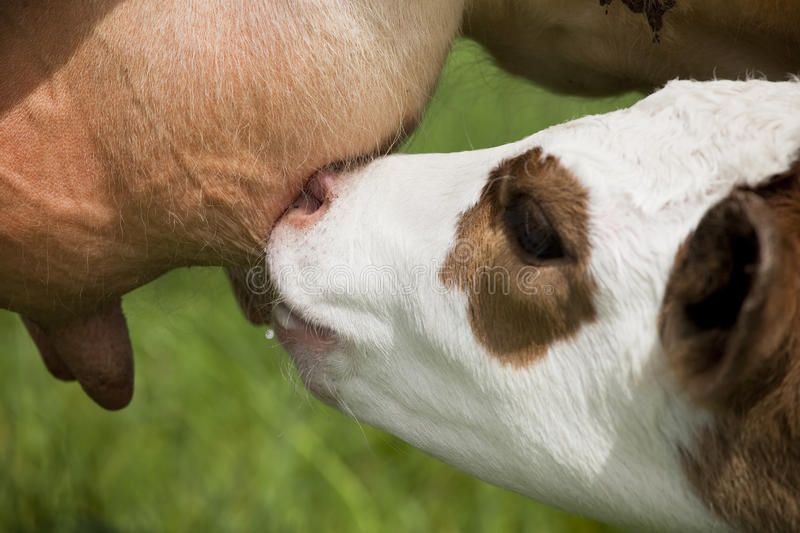 A newborn organism needs a high-energy nutritious food. Therefore, feeding calves during the milk period has its own characteristics.
A newborn organism needs a high-energy nutritious food. Therefore, feeding calves during the milk period has its own characteristics.
The value of colostrum has long been proven and the desire to save money by replacing colostrum with all sorts of substitutes has not justified itself.
Therefore, the feeding of calves during the colostrum period should be based on the following aspects:
- Colostrum quantity
- Colostrum quality
- Colostrum feeding process
How much colostrum should be fed to a calf?
The amount of colostrum should provide a sufficient supply of colostral antibodies. Therefore, the portion of colostrum on the first day should range from 2.5-5.0 liters per calf (10% of the calf's body weight), which is fed in several approaches during the first 6 hours after birth.
Can milk be substituted for colostrum?
Colostrum is not just thick milk. It is a rich source of energy, nutrients and special immunity molecules - immunoglobulins. It is on their number that the health and rapid growth of the calf will depend. Colostrum is considered to be of high quality if the content of immunoglobulins is not lower than 50 mg/ml. Therefore, it is very important to drink colostrum from the mother cow.
It is on their number that the health and rapid growth of the calf will depend. Colostrum is considered to be of high quality if the content of immunoglobulins is not lower than 50 mg/ml. Therefore, it is very important to drink colostrum from the mother cow.
Comparison of the quality of milk and colostrum of cows
| constituents (%) | Milk after calving | Regular milk | |||
| Colostrum (colostrum) | Transitional milk | ||||
| 1st day | 2nd day | 3rd day | |||
| Dry matter | 23.9 | 14.1 | 13.6 | 12.9 | |
| Fat | 6. | 3.9 | 4.4 | 4.0 | |
| Protein | 14.0 | 5.1 | 4.1 | 3.1 | |
| Lactose | 2.7 | 4.4 | 4.7 | 5.0 | |
| Calcium | 0.26 | 0.15 | 0.15 | 0.13 | |
| Immunoglobulins | 6.0 | 2.4 | 1.0 | 0.1 | |
|
| |||||
The process of drinking colostrum
The modern cattle breeding scheme proposes to keep calves separate from their mothers from the first hours of life. Accordingly, the first feeding of calves takes place with the help of special teats. It is important that the first colostrum enters the abomasum no later than 3 hours after birth. This has its own explanation. The ability to absorb colostrum antibodies into the intestines decreases with each passing hour. After 6 hours, this ability is reduced by a third. After 24 hours, the intestines can absorb only 11% of colostrum antibodies. A day later, the secretion of digestive enzymes is activated, which also destroy immunoglobulins.
Accordingly, the first feeding of calves takes place with the help of special teats. It is important that the first colostrum enters the abomasum no later than 3 hours after birth. This has its own explanation. The ability to absorb colostrum antibodies into the intestines decreases with each passing hour. After 6 hours, this ability is reduced by a third. After 24 hours, the intestines can absorb only 11% of colostrum antibodies. A day later, the secretion of digestive enzymes is activated, which also destroy immunoglobulins.
What is the best way to drink milk: from a nipple or from a bucket?
The calf's stomach has 4 chambers, of which only one is developed - the abomasum. Three other chambers (prestomachs) begin to function actively from the second month of life.
During udder sucking, mother's milk flows in small portions directly into the abomasum, where the main digestion takes place. Milk enters through a special channel - the digestive trough, which prevents milk from entering the non-functioning rumen.
While drinking 3 liters of milk with a teat, the calf makes 700 to 900 sucking movements. Small portions of milk are processed by saliva, then they go directly to the abomasum, where they are partially digested by gastric juice. A loose clot of milk is finally digested in the intestines.
While drinking the same amount of milk from a bucket, the calf takes only 40-80 sips of large portions. Milk not treated with saliva enters the abomasum, where it forms a dense lump that is poorly digested in the intestines. This actually leads to malnutrition of the calf.
If you feed a calf from a bucket, large portions of milk overflow through the food chute and enter the rumen, where they begin to rot. The calf is sick, diarrhea begins, weight loss, growth retardation.
This explains why it is necessary to feed calves through a teat with a small hole so that the animal actually sucks and does not swallow.
What temperature should the colostrum be?
Colostrum must be at least 30°C. Ideally, the calf is fed colostrum that was milked from the mother cow. If the colostrum is collected and stored in the refrigerator, it must be heated in buckets of hot water (+50). To provide calves with a sufficient amount of colostrum, it can be frozen in portions in bottles and then gradually heated to a warm state. Cold colostrum negatively affects the calf's stomach. Such calves vilify, grow slowly, lag behind in development.
Ideally, the calf is fed colostrum that was milked from the mother cow. If the colostrum is collected and stored in the refrigerator, it must be heated in buckets of hot water (+50). To provide calves with a sufficient amount of colostrum, it can be frozen in portions in bottles and then gradually heated to a warm state. Cold colostrum negatively affects the calf's stomach. Such calves vilify, grow slowly, lag behind in development.
How to feed calves in the first month of life?
For the first three days the calf is fed with colostrum from the mother cow, for the next three days with colostrum from the mother cow or other cows. In the second week, whole milk is fed at the rate of 10% of the calf's body weight (for example, a calf weighing 37-40 kg should be fed at least 5 liters of milk per day).
Some technologists recommend giving calves 1 liter of fresh warm (+ 25- + 35°C) water one hour after the main teat feeding. But after a week, water should always be freely available.
Starting from the third week, calves are fed 2-3 l/day of whole milk and 3-6 l/day of skim milk.
Starting from the sixth week, milk portions are gradually reduced, which contributes to the weaning process.
How to accustom calves to roughage?
Starting from the second week, the calves should be accustomed to the consumption of other feeds: coarse, succulent and concentrated feeds. Learning must be gradual.
The main purpose of such top dressing is to irritate the villi of an underdeveloped rumen to activate digestion in the proventriculus (in particular, in the rumen).
The faster the calf gets used to eating roughage, the shorter the milk period will be (2.5-3 months) and, accordingly, the cost of rearing young animals will be lower.
To accustom calves to roughage, feed high-quality cereal-bean hay, or dried grass with developed stems.
An excellent alternative to roughage is ready-made calf feed in the form of special pellets.
The granular form has an advantage over a simple mixture of ground grains. Such mixed fodder is not dusty, it is well eaten.
Durable granule irritates the mucosa of the scar, promoting the growth of villi and the settlement of special microflora.
Recommended diet for calves from birth to 3 months
| Age, days | Colostrum, l (at least 10% of the calf's body weight) | Whole milk (at least 10% of calf body weight) | Skimmed milk (skimmed) or milk replacer | Hay kg | Prestart compound feed, kg | Juicy feed, kg |
| 0-6 | 2. | - | - | - | - | - |
| 7-14 | - | 2.5-5.0 | - | - | 0.05 | 0.25 |
| 14-21 | - | 2.5 | 2.5 | 0.2 | 0.1 | 0.35 |
| 22-28 | - | 1. | 1.5 | 0.3 | 0.2 | 0.50 |
| 29-35 | - | 1 | 2 | 0.3 | 0.4 | 0.55 |
| 36-42 | - | 1 | 2 | 0.3 | 0.6 | 0.6 |
| 43-49 | - | 1 | 2 | 0. | 0.7 | 0.7 |
| 50-56 | - | - | 2 | 0.4 | 0.8 | 0.8 |
| 57-63 | - | - | 1.5 | 0.5 | 1.0 | 1.0 |
| 64-70 | - | - | 1.5 | 0. | 1.2 | 1.1 |
| 71-77 | - | - | 1 | 1.0 | 1.3 | 1.2 |
| 78-84 | - | - | 0.5 | 1.3 | 1.4 | 1.4 |
| 85-91 | - | - | - | 1. | 1.7 | 1.9 |
How to feed calves after 3 months?
Modern livestock feeding systems adhere to early weaning. But when weaning is affected not so much by the age of the animal as by its ability to consume PRESTARTER compound feed, at least 0.7-1.0 kg per day.
If properly fed, the calf has a well developed rumen with active microbial digestion.
As a rule, the diet for feeding calves after 3 months does not change, only portions are increased and milk is excluded.
Recommended diet for 3-6 month old calves
| Age, months | Hay, kg | Silo, kg | Compound feed for growth GROVER T-1, kg | Root crops, kg |
| 4 | 1. | 2.0-3.0 | 1.5 | 1.0-1.5 |
| 5 | 2.0-2.5 | 3.0-5.0 | 1.5-1.7 | 1.0-1.5 |
| 6 | 3.0-3.5 | 5.0-7.0 | 1.8-2.0 | 1.0 |
How much should a calf weigh at 6 months?
The weight of the calf depends on the breed, feeding and management. The calf should be born with a body weight of 30-40 kg and at 6 months weigh 130-150 kg. An underweight calf is a sign of improper feeding.
Calf feeding | How and what to feed calves from the first days of life at home (instruction)
To lay the foundation for high productivity in calves, it is necessary to provide them with a balanced diet. For newborns, the first and best food is colostrum, which is an indispensable source of nutrients and immunoglobulins that create the main defense against infections. As they grow older, the diet of animals is changed. At the same time, high-quality compound feed is necessary for good growth of calves. In addition, taking into account age and breed, special additives are selected.
For newborns, the first and best food is colostrum, which is an indispensable source of nutrients and immunoglobulins that create the main defense against infections. As they grow older, the diet of animals is changed. At the same time, high-quality compound feed is necessary for good growth of calves. In addition, taking into account age and breed, special additives are selected.
In the company "Yuzhnaya Korona" you can purchase high-quality and highly physiological feed for fattening calves and young cattle. Our factory produces safe certified products that improve the physical performance of animals.
Content:
- What to feed calves
- Feeding steps
- How to feed calves: basic ways
- Benefits of feeding calves with compound feed and premixes
- Common mistakes when feeding calves
- Benefits of Yuzhnaya Korona compound feed for calves
What to feed calves
If two basic conditions are met, a high weight gain will be guaranteed:
- calves should have good immunity;
- fast transition to roughage consumption in accordance with the most balanced composition.

During the first 90 days of animal growth, cartilage tissue is replaced by bone, live weight gain occurs moderately and averages 500 g / day, a voluminous type of digestive system is created, and finally, colostral immunity is replaced by acquired immunity.
Feeds of vegetable origin in calves are not digested. Until the age of 10 days, the proventriculus is not yet fully developed, and the abomasum does not produce enzymes so that vegetable protein, starch and sucrose can be digested. Mistakes in feeding and growing during the milk period can provoke indigestion, respiratory infections, various diseases, slow down development, and cause stress. What to feed calves correctly for rapid growth and how much to feed?
Colostrum is the cow's first milk after calving. It is recommended to give it the first portion of 3.5-4 liters during the first hour of life and then another 2 liters after 10-12 hours. Properly carried out the first feeding with colostrum is critical for the formation of colostral immunity, which guarantees good health, proper development, high milk production and life expectancy of cattle in the future..jpg) Then, until the age of 15 days, the calf is recommended to be fed with mother's milk, then according to the scheme - milk replacer (whole milk substitute), reverse.
Then, until the age of 15 days, the calf is recommended to be fed with mother's milk, then according to the scheme - milk replacer (whole milk substitute), reverse.
The entire feeding system of young animals is aimed at preserving and strengthening the protective properties of the body of calves. What to choose - whole milk, its substitute or a mixture of both. The farmer usually focuses on affordability and economy. From the point of view of labor organization, milk replacer is more profitable to use on larger farms: they begin to use it 10–14 days after birth. In addition, milk replacer at a price lower than natural milk contains 2.5 times more vitamins A, D3, E. The substitute also has a constant level of nutrients and hygiene parameters: infectious diseases that manifest themselves in the herd are not transmitted from cows to calves.
To ensure a smooth transition to roughage, from the third day it is recommended to introduce granular compound feed into the diet. It helps to accelerate the development of the absorbing surface of the scar, that is, it increases the number and length of the villi of the scar epithelium. The advantages of a factory-made starter food are freshness, palatability and variety.
It helps to accelerate the development of the absorbing surface of the scar, that is, it increases the number and length of the villi of the scar epithelium. The advantages of a factory-made starter food are freshness, palatability and variety.
It contains a lot of protein and energy, so the calf can not be fed hay until he is accustomed to grain feed. Also, one should not forget about the unlimited, constant and free access of animals to drinking water. Thanks to this, the young are more willing and accept roughage in greater quantities. At the age of up to 2 weeks, water is boiled before use and cooled to a temperature of 20-25 ° C. At the age of 2 weeks, water is given without prior boiling.
Feeding steps
How to feed calves? The diet is planned taking into account the physiological needs of animals in each of the age periods:
- Dairy - 60-90 days. The main food for animals is dairy feed. The other part of the diet consists of concentrates, hay, grass cuttings.
 But they are accustomed to roughage gradually. So, by the age of 1 month, the calf should consume about 200 g of hay per day. It is required to distribute feed separately, and it is necessary to monitor their cleanliness and freshness. For example, hay contaminated with animal saliva can quickly turn sour, so you need to replace it in a timely manner. Since the feeding system of young animals is aimed at preserving and strengthening the protective properties of the body, it is important to include factory feed in the diet. It provides a balanced set of all the necessary vitamins and microelements, which is almost impossible to achieve with self-preparation of grain mixtures.
But they are accustomed to roughage gradually. So, by the age of 1 month, the calf should consume about 200 g of hay per day. It is required to distribute feed separately, and it is necessary to monitor their cleanliness and freshness. For example, hay contaminated with animal saliva can quickly turn sour, so you need to replace it in a timely manner. Since the feeding system of young animals is aimed at preserving and strengthening the protective properties of the body, it is important to include factory feed in the diet. It provides a balanced set of all the necessary vitamins and microelements, which is almost impossible to achieve with self-preparation of grain mixtures. - Post-dairy - lasts 90 days or until the calf is 6 months of age. We recommend using starter feed because it provides a smooth transition from milk to coarse and succulent feed. In addition to providing the calf with all the necessary nutrients and energy, reducing milk costs, it also accelerates the normalization of cicatricial digestion, reduces stress factors and the risk of generalized dyspepsia.
 The introduced vegetable diet assumes several varieties of feed at once, including root crops. When using a grain mixture, you must also remember to add premixes.
The introduced vegetable diet assumes several varieties of feed at once, including root crops. When using a grain mixture, you must also remember to add premixes. - The period of intensive growth - until the calf reaches the age of 12 months. Gives high growth, up to puberty. Attention is paid to stable and complete feeding with the rational use of bulk feed in the form of feed mixtures with compound feed for young animals.
- Final fattening - until the calf reaches the age of 18 months. What to feed calves? Animals are given feed with a high concentration of energy to increase fatness, slaughter yield of meat and improve its quality. The diet may include root crops (5-8 kg), roughage (up to 6 kg) and succulent feed - 25-30 kg per head per day.
Nutrient requirements of calves by weight
(German Agricultural Association DLG)
| Component | Calf weight, kg | ||||||
|---|---|---|---|---|---|---|---|
| 50–59 | 60–69 | 70–79 | 80–89 | 90–99 | 100–119 | 120–140 | |
| Net Lactation Energy (NEL) (MJ) | 9.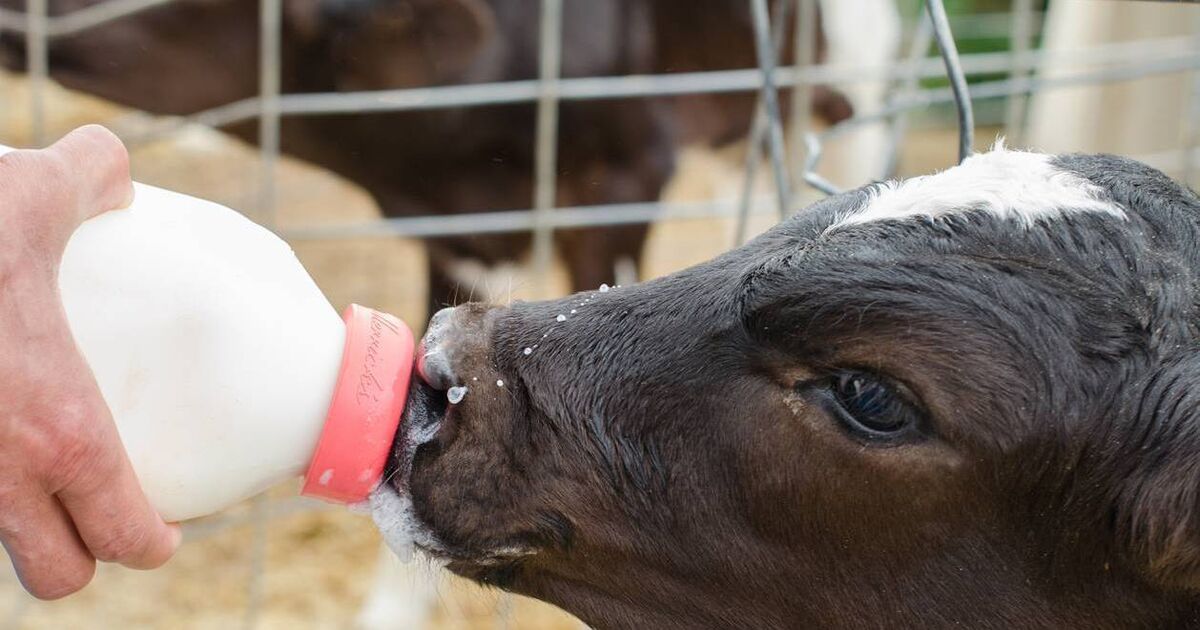 4 4 | 11.0 | 12.6 | 14.2 | 15.8 | 17.4 | 19.0 |
| Crude protein (g) | 300 | 340 | 380 | 420 | 460 | 500 | 540 |
| Ca (g) | 9 | eleven | 13 | fifteen | 17 | 19 | 21 |
| P(g) | 5 | 6 | 7 | eight | 9 | ten | eleven |
| Na (g) | 1.0 | 1.5 | 2.0 | 2.5 | 3.0 | 3.5 | 4.0 |
| Mg (g) | 1.0 | 1.4 | 1.8 | 2.2 | 2.6 | 3.0 | 3.4 |

.jpg) 7
7 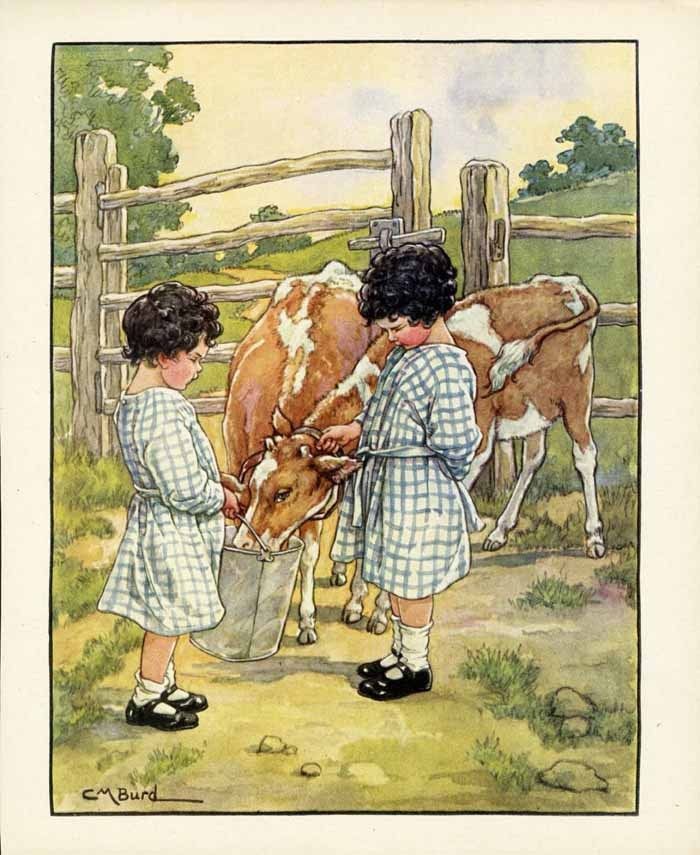 5-5.0
5-5.0 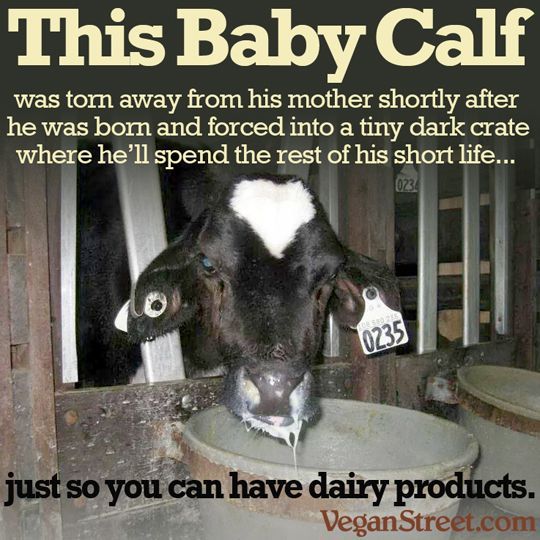 5
5  3
3  7
7  5
5  5-2
5-2  Suction
Suction 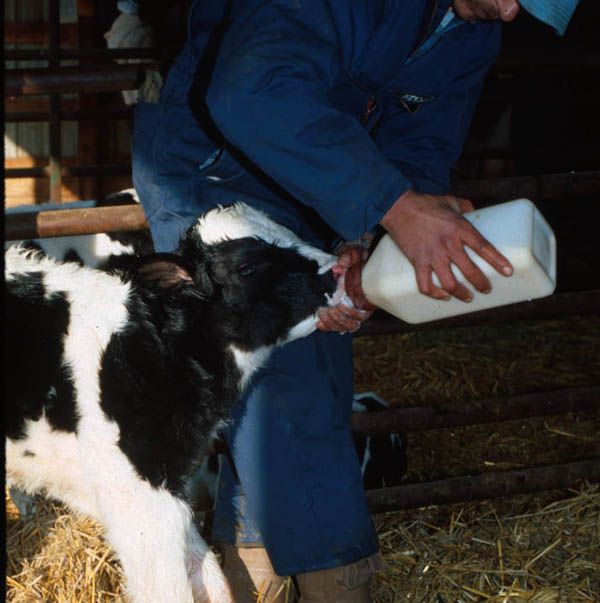 At the end of fattening, the risk of calves becoming obese increases, so it is recommended at this stage to introduce compound feed with a lower energy content and a higher protein concentration.
At the end of fattening, the risk of calves becoming obese increases, so it is recommended at this stage to introduce compound feed with a lower energy content and a higher protein concentration. 
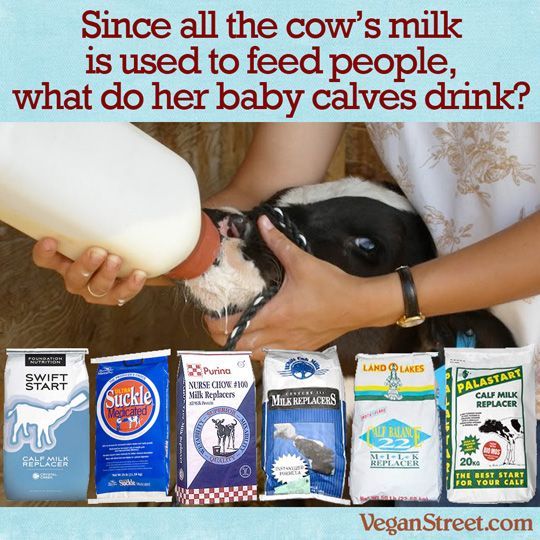 The rate can vary significantly depending on other nutrition, as well as the quality of hay and silage, but most feeding schemes are designed for consumption of 170-225 grams per head.
The rate can vary significantly depending on other nutrition, as well as the quality of hay and silage, but most feeding schemes are designed for consumption of 170-225 grams per head. 









